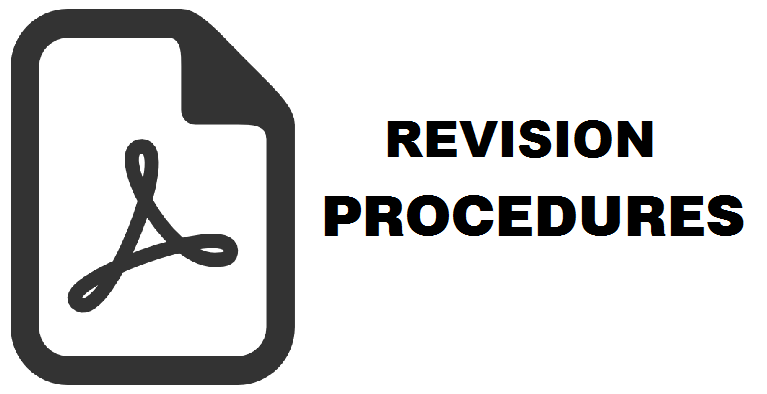Simeulue Earthquake Activity Analysis Using the MLE Method
Henry Junus Wattimanela(1*), Nanang Tyasbudi Puspito(2), Harmanus Batkunde(3)
(1) Universitas Pattimura
(2) Global Geophysics Research Group, Faculty of Mining and Petroleum Engineering, Institut Teknologi Bandung, Bandung, Jawa Barat, Indonesia
(3) Department of Mathematics, Faculty of Mathematics and Natural Sciences, Pattimura University, Ambon, Maluku, Indonesia
(*) Corresponding Author
Abstract
The territory of Indonesia is prone to a high level of tectonic earthquake vulnerability including In Simeulue Regency, one of the regions of Aceh Province. Therefore, this study aimed to analyze level of tectonic earthquake activity in Simeulue Regency and its surroundings divided into four Sub Regions (I, II, III, and IV). The data used spanned 1940-2020 and were sourced from the ISC with the criteria of the depth being <60km and a magnitude of 3Mw. The seismic features were elucidated through descriptive statistics, while the determination of 'a' and 'b' values for individual Sub Region was accomplished by using the maximum likelihood estimation (MLE) method. The results showed that the highest distribution of earthquakes was at a depth of 15-44.9 km and magnitude at intervals of 3.0-4.9 Mw, specifically in Sub Region III. The largest Mc value was found in Sub Region I, while Sub Region III had high seismic activity and rock heterogeneity. In addition, this area had a large seismicity index and the shortest return period at intervals of magnitude 3.0≤M<4.0. Sub Region I on the other hand had a longer seismicity index at intervals of magnitudes 4.0≤M<5.0,5.0≤M<6.0, and M≥6.0.
Received:2023-12-02 Revised:2024-01-11 Accepted:2024-12-07 Published:2025-04-27
Keywords
References
S. Nampally, S. Padhy, & V.P. Dimri (2018). Characterizing spatial heterogeneity based on the b-value and fractal analyses of the 2015 Nepal earthquake sequence. Tectonophysiscs, vol. 722, pp. 154-162.
R. Lines, J.P.P., Walker, & R. Yore,(2022). Progression through emergency and temporary shelter, transitional housing and permanent housing: A longitudinal case study from the 2018 Lombok earthquake, Indonesia. International Journal of Disaster Risk Reduction, vol. 75, pp. 1-14.
M. A., Jafari, (2010). Statistical prediction of the next great earthquake around Tehran, Iran. Journal of Geodynamics, vol. 49, pp. 14-18..
F.A. Nava, L.A. Barrientos, V.H.M. Ramirez, I. Tores, & F.R. Zuniga (2027). Sampling uncertainties and source b likelihood for the Gutenberg-Richter b value from the Aki-Utsu method, Journal of Seismology. vol.22, no.3., pp. 1-10.
E. Luschen, C. Muller, H.Koop, M. Engels, R. Luts, L. Planert, A. Shulgin, Y.S. Djajadiharja(2011). Structure, evolution, and tectonic activity of the eastern Sunda forearc, Indonesia, from marine seismic investigations. Tectonophysics, vol. 508, pp. 6-21.
F. Ramdani, P. Setiani, D.A. Setiawati(2019). Analysis of sequence earthquake of Lombok Island, Indonesia, Progress in Disaster Science. vol. 4, pp. 1-9.
A. J. Meltzner, K. Sieh, H-W. Chiang, C-C. Wu, L.L.H. Tsang, C-C. Shen, E.M. Hill, B.W. Suwargadi, D. H. Natawidjaja B. Philibosian, & R.W. Briggs(2015). Time-varying interseismic strain rates and similar seismic ruptures on the Niase Simeulue patch of the Sunda megathrust. Quaternary Science Reviews, vol. 122, pp. 258 – 281.
D. Zaccagnino, L. Telesca, & C. Doglioni (2023). Global versus local clustering of seismicity: Implications with earthquake prediction.Chaos, Solitons, and Fractals, vol. 170, no. 113419, pp. 1-8.
J. Henderson, I.G. Main, R.G. Pearce, & M. Takeya. (1994). Seismicity in north-eastern Brazil:fractal clustering and the evolution of the b-value. Geophysical Journal International, vol. 116, pp. 217-226.
M. Ishimoto, & K. Iida, (1939). Observation of earthquakes registered with the micro seismograph constructed recently. Bulletin of the Earthquake Research Institute. Vol. 17, pp. 443-478.
S. Sharma, S. Baruah, O.P. Sahu, P.K. Bora, & R. Duarah(2013). Low b-value prior to the Indo-Myanmar subduction zone earthquakes and precursory swarma before the May 1995 M 6.3 earthquake. Journal of Asia Earth Sciences. Vol. 73, pp. 176-183.
W.D. Smith(1981).The b-value as an earthquake precursor. Nature. Vol. 289, pp. 136-139.
Syafwina(2014).Recognizing indigenous knowledge for disaster management: Smong, Early warning system from Simeulue Island, Aceh”, The 4th International Conference on Sustainable Future for Human Security. SustaiN 2013. Procedia Environmental Sciences. Vol 20.
Y. Hiramatsu, N. Hayashi, & M. Furumoto(2000). Temporal changes in coda Q-1 and b value due to the static stress change associated with the 1995 Hyogo-ken Nanbu earthquake. Journal of Geophysical Research. vol 105, No. B3, pp. 6141-6151.
D. Arubi, Zulfakriza, S. Rosalia, D.P.Sahara, & N.T. Puspito(2022).Estimation of B-Value Variation as Earthquake Precursor in Java Region with Maximum Likelihood Method. 1st International Seminar on Earth Sciences and Technology 2022, IOP Conf. Series: Earth and Environmental Science. Vol 1047.
U. Chasanah, Madlazim, & T. Prastowo(2013). Analisis tingkat seismisitas dan periode ulang gempa di Sumatera Barat pada Periode 1961-2010. Jurnal Fisika, vol.02, no. 02, pp. 1-5.
I. Wally, H.J. Wattimanela, & Y.A. Lesnussa. Analysis of earthquake activity level in several districs in the Province of Aceh with using the Gutenberg-Richter Method approach”, The 7th International Conference on Basic Sciences 2021 (ICBS 2021).AIP Conference Proceedings. Vol. 588.
I.F.A. El-Nader, A. Shater, & H.M. Hussein(2016). Mapping b-values beneath Abu Dabbab from June to August 2004 earthquake swarma. NRIAG Journal of Astronomy and Geophysics. Vol. 5, pp. 403-412.
S. Gunti, P. Roy, J. Narendran, R. Pudi, S. Muralikrishnan, K.V. Kumar, M. Subrahmanyam, Y. Israel, & B.S. Kumra, (2022 ). Assessment of geodetic strain and stress variations in Nepal due to 25 April 2015 Gorkha earthquake: Insights from the GNSS data analysis and b-value. Geodesy and Geodynamics. Vol. 13, pp. 288-300.
V.Sharma, & R. Biswas (2022 ). Probabilistic earthquake hazard parameterization for Indo-Burma region using extreme value approach. Natural Hazards Research. Vol. 2., no. 279286, pp. 279-286.
E. Gorgun (2013). Analysis of the b-values before and after the 23 October 2011 Mw 7.2 Van-Ercis, Turkey earthquake. Tectonophysics, vol 99, pp. 213-221.
J.P. Wang, Yun Xu, & Yih-Min Wu (2017). Earthquake probability in Taipei based on non-local model with limited local observation: Maximum likelihood estimation. Soil Dynamics and Earthquake Engineering. Vol. 99, pp. 150-156.
A. Rahman, A. Sakurai, & K. Munadi (2018 ).The analysis of the development of the Smong story on the 1907 and 2004 Indian Ocean tsunamis in strengthening the Simeulue island community's resilience. Vol. 29, pp. 13-23, 1 August 2018.
C. Singh(2014). Spatial variation of seismic b-value across the NW Himalaya. Geomatics, Natural Hazards, and Risk. Vol. 7, no.2, pp. 522-530.
Q. Han, L. Wang, J. Xu, A. Carpinteri, & G. Lacidogna (2015). A robust method to estimated the b-value of the magnitude-frequency distribution of earthquakes. Chaos, Solitons, and Fractals, vol. 81, pp. 103-110.
C-H. Lin (2010). Temporal b-value variations throughout a seismic faulting process: The 2008 Taoyuan Earthquake in Taiwan. Terr. Atmos. Ocean.Sci. Vol.21, no.2, pp.229-234.
R.E. Walpole (1982). Introduction to Statistics, 3rd Edition, Macmillan Publishing Company, Inc., New York.
N. R. Draper, & H. Smith (1998). Applied Regression Analysis, Third Edition, John Wiley & Sons. Inc, New York.
K. Kladivko & T. Rusy (2022). Maximum Likelihood Estimation of the Hull-White model, Journal of Empirical Finance, vol 70, pp 227-247.
F. Liu (2022). A comparison between multivariate linear model and maximum likelihood estimation for the prediction of elemental composition of coal using proximate analysis, Results in Engineering, vol 13.
S. Kim & S. Lee (2021). Maximum likelihood estimation of probabilistic non-suppression model for OECD NPP electrical fire applying non-negative continuous distribution, Fire Safety Journal, vol 122, pp. 1-7.
J.A. Dambon, F. Sigrist, & R. Furrer (2020). Maximum likelihood estimation of spatially varying coefficient models for large data with an application to real estate price prediction, Spatial Statistics, vol 41, pp. 1-21.
Article Metrics
Refbacks
- There are currently no refbacks.
Copyright (c) 2025 Henry Junus Wattimanela, Nanang Tyasbudi Puspito, Harmanus Batkunde

This work is licensed under a Creative Commons Attribution-NonCommercial 4.0 International License.
Accredited Journal, Based on Decree of the Minister of Research, Technology and Higher Education, Republic of Indonesia Number 225/E/KPT/2022, Vol 54 No 1 the Year 2022 - Vol 58 No 2 the Year 2026 (accreditation certificate download)
ISSN 2354-9114 (online), ISSN 0024-9521 (print)










